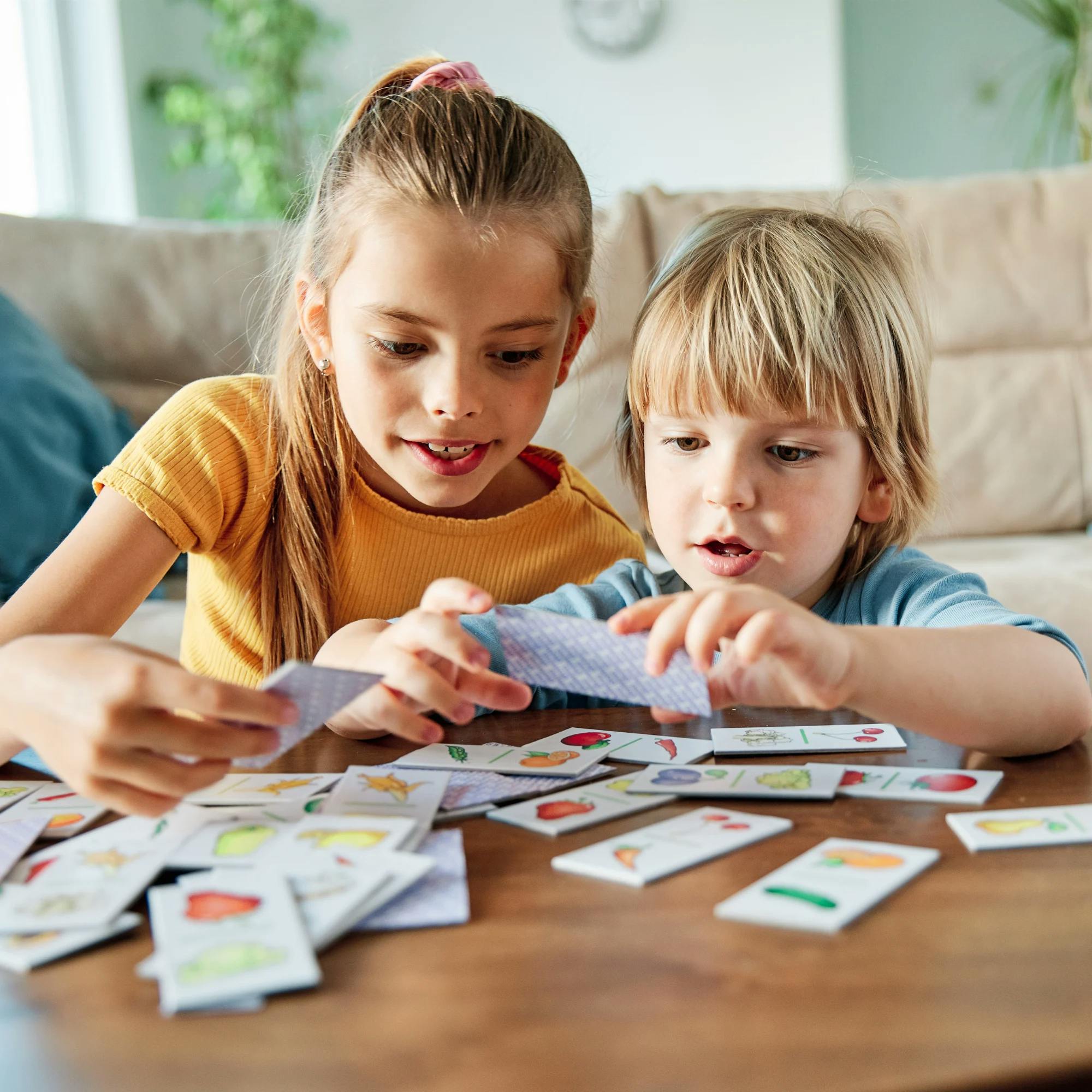You may not realize it, but some of the best people to involve in your child’s speech therapy sessions are… their siblings! Brothers and sisters can be terrific built-in therapy buddies. They can motivate the child who’s receiving therapy, and even help sessions and home practice go more smoothly.
Read on for some practical tips from speech therapists for involving siblings in therapy sessions–and helping your child who’s in therapy make even better progress.
What does a typical speech therapy session look like?
First of all, let’s talk generally about what a speech therapy session looks like. For children, speech therapy usually centers around play. The speech therapist will have various toys, games, and activities planned. They’ll use these items to work on the goals that are part of your child’s treatment plan. These may be goals to target speech sound production, improving receptive and expressive language, social language skills, or stuttering.
Your speech therapist will help your child reach their goals by giving them different directions, prompts, and support during sessions–all while doing something fun.
Why involve siblings in speech therapy?
There are lots of benefits to getting your other children involved in speech therapy sessions:
The child receiving speech therapy may be more likely to participate in sessions.
The child can practice more often at home with the sibling.
More people in the family will understand how to help the child with their speech and language. For example, one study looking at children who use augmentative and alternative communication (AAC) showed the positive impact that siblings can have when they learn to communicate with their sibling.
Siblings working on tasks together have more chances to bond.
Children who help their sibling can feel more confident in their own abilities.
Here’s how your other children can join in during speech therapy sessions.


Playing games during speech therapy sessions
Remember, speech therapy often revolves around play. Having a sibling in the session provides a built-in game partner! Of course, the speech therapist can fill this role, but it’s even more fun when siblings get to play together–or against each other. This can provide extra motivation to keep your child engaged in therapy.
Speech therapist Sarah Baldwin, M.A., CCC-SLP, recommends games like Candy Land and Uno. In addition, activities like Play-Doh and puzzles can become a game all by themselves.
No matter the activity, there’s likely a way that the sibling can be part of it. Lexi Myers, M.S., CCC-SLP, another Expressable speech therapist, recommends each sibling taking a turn, racing to see who can build or make something the fastest, or working together to create something. You know your children best, so think of some ways your kids like to play together.
Sibling interactions help with language development
General sibling interactions, including playing together, are great ways to practice receptive and expressive language skills. Language is easily targeted and practiced during play routines. And who better to play with than a sibling!
Your speech therapist can provide some tips for questions that the sibling can ask, or words or phrases they can model, to help your child meet their therapy goals. For example, the sibling could learn how to offer choices to their sibling to prompt them to answer: “Would you like the book, or the ball?”
Your speech therapist can provide tips for questions that the sibling can ask, or words they can model, to help your child meet their therapy goals.
Or they could model words for the child to imitate. For example, they can use the word “more!” and prompt their sibling to imitate them in order to request more of something, like blowing bubbles or turning on a toy that sings.
Interacting with a brother or sister is also a great way to work on social language skills. Siblings can practice social communication such as:
Politely taking turns during a game
Pretending to order food or ask for help
Interpreting others’ feelings or thoughts


How siblings can model or demonstrate language
Kids often enjoy being the “teacher” and showing their sibling how to say the sounds or words they’re working on in speech therapy. Even better, the kiddo in therapy is often motivated to watch their sibling and repeat after them. If your child is working on articulation skills, when the speech therapist models the target sounds or words, the sibling can also show the child how to say it.
Jane Yusupov, M.S., CCC-SLP, an Expressable speech therapist, says that for some clients, she uses “reverse practicing.” The child who is receiving therapy teaches their sibling what they're learning. This reverse practice is a great way for the child to show their speech therapist what they know and understand.


How siblings can help with speech therapy practice
Getting siblings involved in the session can help with home practice, too. Because they get to see what’s happening in speech therapy, the sibling will be able to help between sessions. Practicing throughout the week is extremely important for making progress.
While practicing with a sister or brother shouldn’t replace practicing with an adult, it’s certainly a big help to busy parents. Communication is a part of daily life, and the more practice, the better!
You can use a lot of the same games and activities that motivate kids during therapy at home. Be sure to ask your speech therapist how and what to practice between sessions.


Helping your child in therapy make better progress, while also building bonds between siblings–it’s a win-win. Ask your speech therapist for ways that all of your children can be involved in sessions. They can tell you how to approach it, ways to make it fun, and how to keep speech practice going all week long.
How Expressable Can Help
Concerned your child isn't reaching age-expected milestones? Looking for communication support from a professional? Expressable is a national online speech therapy practice serving children and adults. We treat all major areas of communication and feeding, offer flexible hours including evenings and weekends, and accept most major health insurance plans. We’re proud to have earned more than 3,000 5-star reviews from our clients (4.9/5 average).
Our therapy model is centered on parent and caregiver involvement. Research proves that empowering caregivers to participate in their loved one’s therapy leads to better outcomes. That’s why we combine live, 1-on-1 speech therapy with personalized education and home practice activities for faster progress.
Communication is more than words. It’s how we share how we feel and show who we are. We’re here to help you or your child do just that.

 Abby Barnes, M.S., CCC-SLP
Abby Barnes, M.S., CCC-SLP










